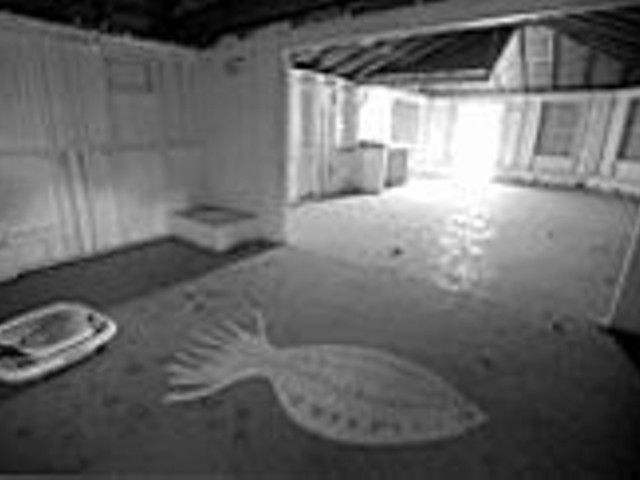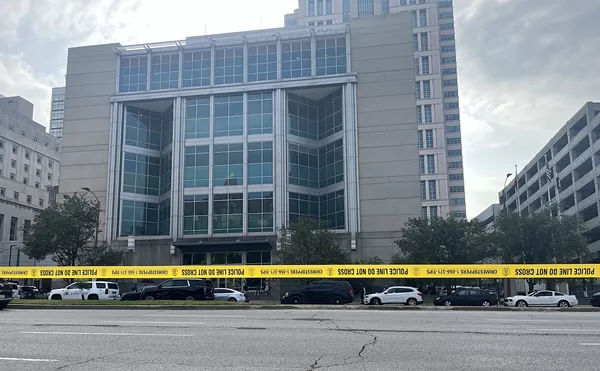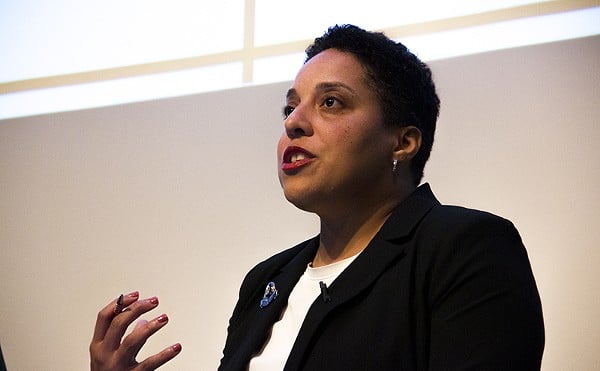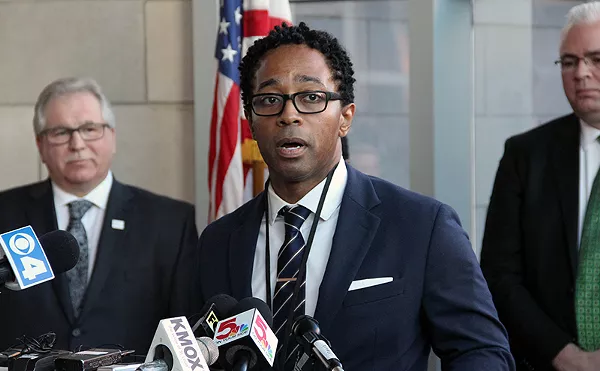Downtown Memphis, however, is everything Elvis isn't. And it isn't hiding out, working the midnight shift at a 7-Eleven down in Tupelo, Mississippi or pumping gas in Trumann, Arkansas.
In less than a decade, a critical mass of residents, redevelopment projects, nightlife, public facilities, tourist attractions and new buildings has emerged in what was once the dying and decaying heart of this Mississippi River city. Downtown has grown from about 1,700 full-time residents to more than 17,000 and possesses the priciest per-square-foot residential-construction figure in Tennessee.
Make no mistake, though. Downtown Memphis ain't perfect: It's sucked up a massive amount of public money and sports its share of monied greedheads feeding at the public trough and big-ticket white elephants -- projects that promised to jump-start other development that never got off the ground. And it still has its share of urban desolation.
But from the blues bars of Beale Street and the pubs of the old Irish neighborhood known as the Pinch District to the neotraditional homes on Mud Island and the South Bluffs to the condos overlooking a jewelbox of a new downtown baseball stadium, home diamond of the Cardinal's Triple-A affiliate, the Redbirds, Memphis finds itself the proud owner of a downtown that is still lively well after the nine-to-five crowd heads for the suburbs.
Dumb luck, an unsevered connection to the river and a willingness to learn from past mistakes such as the Mid-America Mall and the Mud Island monorail and historical museum partly explain this rebirth, say Memphis civic leaders such as Benny Lendermon, head of the Riverfront Development Corporation, a public-private partnership.
Like lightning, that can't be bottled and exported upriver to St. Louis.
But what can be captured and shipped to this town is a key component of downtown Memphis' success -- its emphasis on single-family homes, condos, apartments and townhouses and the commercial outlets that cater to these nuevo downtowners, from clubs to restaurants to grocery stores to shops. There are even plans for a new $12 million public school.
That's what downtown St. Louis needs to support its growing number of downtown residents, says Matt Ghio, a Memphis-born lawyer and board member of Metropolis, the activist organization of young St. Louis residents who are trying to get this city's civic leaders to wean themselves from their reliance on silver-bullet solutions such as the convention-center hotel and the stalled stadium project for the Cardinals.
It needs something else that Memphis has down cold, says Ghio -- a willingness to play smallball, to take a block-by-block approach, build on incremental success and mix in a few judiciously placed big-ticket projects that complement what's happening on a grassroots level.
"Smallness works," Ghio says. "You've got to do it small, and you've got to do it right. If you do a lot of small stuff well, you got something big that works. You're creating a neighborhood -- a neighborhood on steroids. You've got all this activity going on, and plop a ballpark down and, voilà, you've got density."
Lendermon agrees.
"It's all those things adding up, building-block fashion," he says, "a number of little bitty pieces coming together."
But before it learned to play smallball, Memphis had to learn to walk away from the silver-bullet approach, says Tom Marshall, architect and longtime Memphis City Council member. The $70 million mid-'70s fiasco known as the Mud Island theme park helped this process along, he says, creating a distaste for big-ticket projects that don't deliver the promised salvation of downtown.
"We don't want another boondoggle like Mud Island," Marshall says. "We always seemed to take these initiatives and pilot them with such glitz and glamour and promises that were impossible to reach. Constituents are very leery about initiatives that have a lot of splash but are unattainable."
This is not to say there haven't been a number of big-ticket projects in downtown Memphis, including the $105-plus-million Peabody Place office-and-entertainment complex pushed by developer Jack Belz, owner of that grande dame of a hotel, the Peabody, where the ducks parade to a pond in the lobby every morning. A new headquarters for AutoZone Inc. and the ballyard for the Redbirds were also built nearby.
But these weren't seen as stand-alone saviors. They supercharged what was already going on downtown, creating a critical mass of residents and visitors that keep cash registers ringing in restaurants, bars and shops and ensuring the livelihood of creature comforts that appeal to both those who live there and those who are only doing a weekend drive-by.
"It's part of a plan," says Robert Lipscomb, executive director of the Memphis Housing Authority and the city's Housing and Community Development division. "We had to build some anchors, and we developed several for downtown -- Peabody Place and housing. The key was bringing people downtown. And what attracts people is having activities for them."
Although Marshall, Lipscomb and Lendermon want to see those suburban dollars joining the coin of downtown residents, none of them wants to see a suburban-style mall or project jammed onto urban turf. St. Louis has an ongoing reminder of the folly of such projects -- St. Louis Centre, the failed dreamchild of former Mayor Vince Schoemehl. With its skywalks and vacant retail space, St. Louis Centre is anathema to the bustling street traffic new urbanites want to encourage with a mix of shops, restaurants and other retail outlets aimed at office workers and downtown residents.
"The issue is, the stores don't address the street," says Midge McCauley, a Philadelphia consultant recently hired by the Downtown St. Louis Partnership to develop a plan for revitalizing downtown retail activity. "Its lack of curb appeal, its lack of attention to street-level retail, is a deterrent. St. Louis Centre doesn't spew forth that image. It certainly can't remain in its current condition and have downtown become a major retail center."
There's a symbiotic relationship here. Be it Memphis or St. Louis, the presence of around-the-clock residents convinces suburbanites and tourists that downtown is a safe, cool and interesting place to spend some dollars and time. Residents are also a powerful statement that downtown isn't a pale imitation of the suburban shopping experience or a place only tourists visit.
"While residents downtown might not be an end unto themselves, what we are is the reverse of canaries in the coal mine," says Margie Newman, a St. Louis documentary filmmaker and downtown loft dweller.
But those downtown residents have to be supported by grocery stores, restaurants, shops and schools. Memphis is providing that support. St. Louis is not, say local developers such as Kevin McGowan, who crossed swords with City Hall over his alternative plan for saving the Century Building instead of razing it for a parking garage as part of Mayor Francis Slay's blueprint for reviving the Old Post Office.
"There's no plan, there's no marketing, there's no blueprint to take advantage of this golden goose and make sure it keeps laying eggs," McGowan says.
Not so, says Tom Reeves, head of Downtown Now!, the nonprofit agency charged with steering the renovation of St. Louis' decaying core. With a plan passed in December, based on discussions between civic leaders, planners, bankers, developers and downtown activists, St. Louis is just starting down a decade-long road that Memphis and other revitalized cities have traveled.
"We're still in the infancy," says Reeves, a former banker. "Urban revitalization is a marathon, not a sprint."
Major features of the plan include the $17 million Washington Avenue streetscape renovation and the mayor's favored plan to revitalize the Old Post Office building -- and, off in the distant future, preliminary drawings for a three-block-wide plaza near the Adam's Mark Hotel that would bridge Memorial Drive and connect the Old Court House area to the Arch grounds.
But the streetscape plan has been dogged by construction delays and the appearance of a conflict of interest on the part of deputy mayor Barb Geisman, who has been asked by federal highway officials to step down from ramrodding the project because she owns property on the avenue. The project is also causing considerable financial pain to the retailers who have hung in down there through decades of downturn.
And thanks to a nasty bit of mayoral thuggery directed at McGowan and his partner, loft developer Craig Heller, a strong whiff of old-style St. Louis politics permeates the Old Post Office plan, one that counters Reeves' rhetoric about how Downtown Now! is creating a new dialogue between developers, bankers, planners and politicians.
Still, Reeves talks confidently about his shop's plans and the drive to create development opportunities for private capital with judiciously placed public-money projects such as the streetscape and the Old Post Office. He sees these corridors of development as links to the civic assets downtown already has, eventually extending down to the river and over to Union Station and Busch Stadium -- or its eventual replacement.
But Dennis Judd, an urban-revitalization expert at the University of Illinois-Chicago who used to be on the faculty at the University of Missouri-St. Louis, says talk about changing St. Louis' political culture isn't enough. The city must create a cadre of professional planners, freed from politics, who know how to talk to developers and help them swing deals.
Judd disagrees with urban activists such as Ghio and Newman who emphasize the need for downtown residents. He says the key to downtown revitalization is the presence of high-end amenities -- museums, theaters, restaurants, stadiums, clubs and parks -- that bring a steady stream of visitors to downtown, creating the retail network that supports downtown residents.
But to create this kind of atmosphere, St. Louis needs to break the culture of hostility it shows to outsiders with money and vision to make something happen, Judd says.
"I've often thought St. Louis leadership says to itself, 'We know the pie is getting smaller, but at least we're the ones slicing it up,'" says Judd. "But any city that's thriving has outside players with vision, and you have to step up and welcome these people and say, 'What do you need?' instead of trying to shut them out."
At the heart of the problem is the city's fragmented political system -- its 28 aldermen, all of them with a say on development projects in their wards, and executive power that's split between the mayor's office and three or four independently elected county offices. This has kept St. Louis in the silver-bullet rut and has blunted any effort to link its considerable assets, such as the Arch and Union Station.
"You've got a culture that hearkens back to another time, centered on race and jealousy between the North Side and the South Side and trade-offs to mollify those jealousies," Judd says.
It's always risky to draw too fine a lesson plan from another city's success. And there are key differences between Memphis and St. Louis -- from the accident of geography that has Memphians looking west into glorious river sunsets backdropped by the cool green of the river's floodplain to a strong-mayor system of government that means city leaders can ramrod projects without as much ring-kissing as Slay has to do.
Ghio points out other obstacles St. Louis has to contend with, including a larger downtown core that is bisected by multiple interstates and a connection to the river that has been severed by the Arch, an industrial wasteland and those same pesky four-lanes. With Tom Lee Park, Mud Island, a trolley line that runs along the river and the restoration of the cobblestones where steamboats once unloaded bales of Delta cotton, Memphis is firmly connected to the river in a way St. Louis is not.
Which is another way of saying that Elvis is dead while Memphis is not. And downtown St. Louis still isn't feeling all that well itself.





